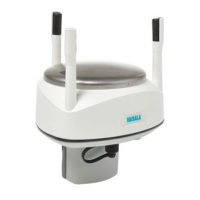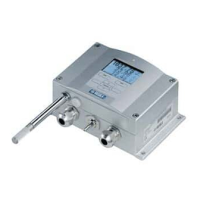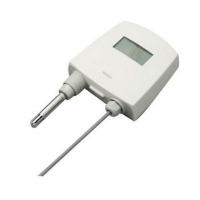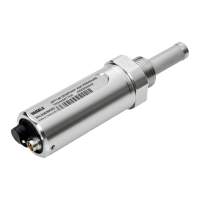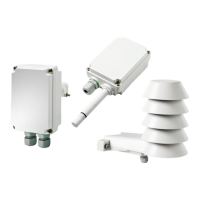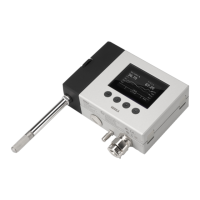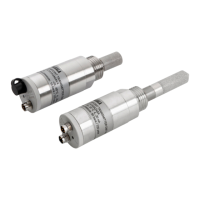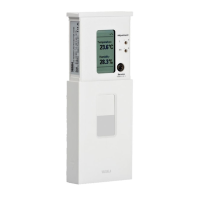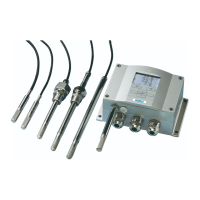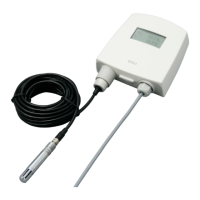Chapter 5 _______________________________________________ Wiring and Power Management
VAISALA_______________________________________________________________________ 71
Table 14 Economic Power Management
Measurement Consumption
Wind measurement The most consuming operation in the system, with extra variations
depending on how the wind is reported.
If you need long time averages and measure wind constantly, there are no
large differences between requesting periods or modes.
Fully continuous wind measurement with a 4 Hz sampling rate adds about
4.5 mA to the standby current, depending on the wind and some other
climatic conditions.
A 10-second average requested every 2 minutes consumes 8 times less. 1
Hz sampling rate decreases it to about one fourth.
PTU measurement Adds approximately 0.9 mA to the standby consumption. Each single
measurement takes 5 seconds (including the warm-up period). This can be
used for estimating the average consumption of the PTU.
Continuous precipitation Adds approximately 0.4 mA to the standby consumption. A single, isolated
raindrop increases current consumption for about 10 seconds (continued, if
more raindrops are detected within the 10-second period).
ASCII RS-232 Standby
consumption
Typically 1.5 mA. The jumper wires across TX+/RX+ and TX-/RX- (only
necessary in 2-wire RS-485) increase consumption slightly.
ASCII RS-232 Polling
mode and Automatic
mode
Equal consumption. The Automatic mode is a little more economic, since
interpreting the poll takes more processing time than starting the Automatic
message. However, take care when selecting the Precipitation Auto-send
mode, where the sub-modes M=R and M=C can cause extra consumption
in rainy conditions due to triggers for sending messages about rain
incidents.
ASCII RS-232 Data
transmission
Adds 1 ... 2 mA to the standby consumption during the message sending
time. Note that the host device's input (data logger or PC) can constantly
draw some current from the TX line.
RS-485 and
RS-422 Data interfaces
Consume about the same amount of power as RS-232. With long data
cables the data consumption during data transmission can be much higher,
especially when termination resistors are used. On the other hand, the RS-
485 driver is in high impedance state when not transmitter. Thus in idle
state, no current can be drawn by the host input.
NMEA modes They consume about the same as ASCII modes.
SDI-12 Native mode M=S, C=1 has the lowest stand by consumption, about 0.1 mA. Note that it
can also be used with RS-232 terminals. See the SDI-12 connection
diagram in Figure 34 on page 67. In this case, the commands must be in
SDI-12 format, but no special line break signals are required. The SDI-12
mode is for polling only.
SDI-12 Continuous
mode
M=R consumes about the same as the ASCII RS-232 mode.

